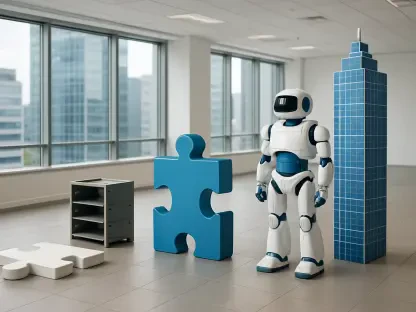In today’s technology-driven workplaces, HR departments are wrestling with an unprecedented challenge of using AI tools to evaluate employee creativity during performance reviews, raising a critical question about whether cold data can truly measure the warmth of human innovation. What happens when a machine decides the worth of a groundbreaking idea in a corporate boardroom? This clash between artificial intelligence and the human spark is reshaping how talent is assessed, leaving HR professionals at a crossroads of efficiency and empathy.
The significance of this issue cannot be overstated. Creativity remains a vital driver of progress in modern organizations, fueling problem-solving and competitive advantage. Yet, as AI adoption surges—streamlining everything from hiring to training—its role in judging originality introduces risks of misjudgment and mistrust. HR teams must navigate this delicate balance, ensuring that performance evaluations remain fair and meaningful while leveraging tech advancements. This dilemma isn’t just about tools; it’s about preserving the essence of what makes workplaces thrive: human ingenuity.
When Algorithms Assess Artistry: A Growing HR Struggle
In an era where AI tools are ubiquitous, their integration into performance reviews marks a bold yet contentious step. These systems, often designed to spot AI-generated content, are now tasked with gauging the authenticity of employee ideas. A marketing campaign pitch or a strategic proposal might pass through an algorithm’s lens before reaching a manager’s desk. The promise of objectivity is tantalizing, but the reality raises concerns about whether a machine can discern the nuanced brilliance behind a truly original concept.
This trend is gaining traction rapidly. A recent study revealed that over 60% of organizations have adopted some form of AI in performance monitoring since 2025. HR departments appreciate the speed and scale these tools offer, especially in large firms where manual reviews are impractical. However, the reliance on data-driven assessments risks reducing creativity to mere metrics, potentially overlooking the cultural or emotional impact of an employee’s contribution in favor of pattern recognition.
The stakes are high for both employees and employers. If algorithms misjudge human work—flagging it as inauthentic or derivative—talent may feel undervalued or unfairly critiqued. This emerging struggle challenges HR to rethink how technology is applied, ensuring it supports rather than supplants the human elements that define innovative workplaces. The question looms: can a balance be struck before trust erodes?
Why This Clash Resonates in Today’s Workplaces
Beyond the technical intricacies, the debate over AI in performance reviews touches on deeper workplace values. Creativity isn’t just a buzzword; it’s the backbone of adaptability in fast-paced industries like tech, marketing, and design. Employees who think outside the box often propel their companies forward, yet the rise of AI tools to evaluate their output introduces a tension between efficiency and authenticity that HR cannot ignore.
This issue also reflects broader employee expectations for fairness. As AI becomes a staple in decision-making—from recruitment to promotions—transparency in its use is paramount. Workers want assurance that their unique contributions won’t be distilled into cold statistics or misunderstood by a system lacking context. A misstep here could dampen morale, stifling the very innovation businesses seek to cultivate.
Moreover, the rapid pace of AI adoption amplifies the urgency. With tools evolving yearly, HR must stay ahead of potential pitfalls while harnessing benefits like streamlined processes. The challenge lies in aligning technological capabilities with a commitment to human-centric evaluation, ensuring that performance reviews celebrate rather than constrain the creative spirit.
Exploring the AI-Human Divide in Evaluations
The rift between AI and human judgment in performance reviews reveals itself across several dimensions. AI detectors, built to identify machine-generated content, offer HR a way to ensure originality, processing huge volumes of data at unmatched speeds. Their role is especially critical as AI tools become common for drafting reports or ideation, making authenticity a pressing concern. Recent data indicates that nearly two-thirds of companies now rely on such systems for some aspect of employee monitoring.
Yet, these tools are far from flawless. False positives—where human work is mistakenly flagged as AI-generated—create friction, with error rates in some pilot programs reaching up to 15%. Beyond technical hiccups, AI lacks the capacity to evaluate emotional resonance or strategic relevance, often missing the bigger picture of an idea’s impact. This limitation frustrates employees who feel their depth of thought is reduced to a binary output.
Human evaluators, by contrast, bring an irreplaceable perspective. They can weigh an idea’s alignment with organizational goals or its cultural significance—factors beyond an algorithm’s grasp. Additionally, trust plays a pivotal role; over-dependence on AI risks making employees feel surveilled rather than supported, potentially curbing their willingness to take creative risks. This divide underscores the need for a nuanced approach in HR practices.
Insights from the Trenches: Real-World Perspectives
Voices from the field paint a vivid picture of this evolving challenge. Dr. Emily Carter, a leading HR technology consultant, observes, “AI can spot patterns of inauthenticity, but it’s blind to the heart of creativity—the ‘why’ behind an idea.” Her perspective highlights a critical gap, suggesting that while technology aids in flagging issues, it cannot replace the interpretive depth of human judgment in reviews.
A case study from a mid-sized advertising firm further illustrates the pitfalls. After rolling out AI detectors for performance assessments in early 2025, the company noted a 20% drop in employee satisfaction, attributed to perceptions of unfair scrutiny. HR quickly pivoted to a human-led process, using AI only as a preliminary filter. This shift restored confidence, proving that employees value evaluations rooted in personal understanding over mechanical analysis.
These examples emphasize a broader lesson for the industry. Technology has a place in supporting HR functions, but its limitations become starkly evident when applied to intangible qualities like creativity. Balancing employee morale with the benefits of AI remains a tightrope walk, one that demands careful consideration of real human experiences over rigid data outputs.
Striking a Balance: Actionable Strategies for HR
Navigating this complex terrain requires HR to adopt practical, hybrid strategies that merge AI’s strengths with human insight. One effective step is positioning AI detectors as supplementary tools rather than final arbiters. By using them to highlight potential inauthenticity for further review, HR ensures that context and intent are assessed by managers who understand the bigger picture.
Transparency also plays a crucial role in maintaining trust. Clearly explaining how AI tools factor into evaluations—and emphasizing that human judgment holds the final say—can alleviate employee concerns about being unfairly judged by machines. This openness fosters a culture of collaboration, where technology is seen as an ally rather than a threat to personal achievement.
Finally, HR should prioritize impact over mere originality in assessments. Training evaluators to focus on how ideas solve problems or advance goals, rather than just whether they pass an AI authenticity check, keeps the focus on meaningful contributions. Encouraging a workplace where AI assists in ideation while reviews celebrate individual effort further bridges the gap, ensuring that both innovation and efficiency thrive in tandem.
Reflecting on this journey, HR teams across industries have grappled with integrating AI into performance reviews without losing sight of human creativity. The lessons learned point toward a collaborative model where technology supports rather than dictates outcomes. Looking ahead, the next steps involve refining these hybrid approaches, investing in training to enhance human judgment, and continuously engaging employees to rebuild trust. By prioritizing empathy alongside innovation, HR paves the way for evaluations that truly honor the unique spark of human potential.









